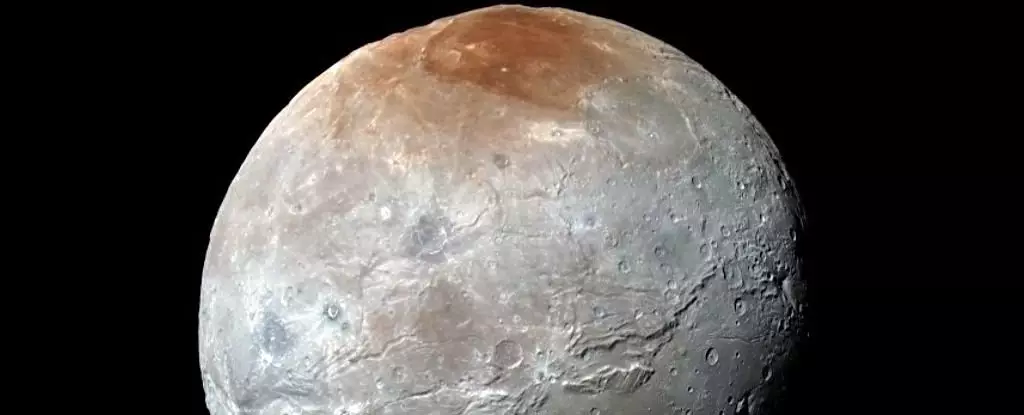The distant realms of our Solar System continue to captivate astronomers and space enthusiasts alike, and nowhere is this intrigue more pronounced than within the intriguing binary system of Pluto and its moon Charon. Situated a staggering 5.7 billion kilometers from the Sun, Pluto—now designated as a dwarf planet—is a frigid, icy world characterized by mountains, glaciers, and craters. Its temperatures plunge to extremes, averaging around –232°C. The gravitational dance of Pluto and its five moons—Styx, Nix, Kerberos, Hydra, and Charon—presents a unique astronomical narrative that reveals the complexities of planetary formation and evolution.
Among these moons, Charon stands out as a significant companion to Pluto. With a diameter of slightly over 1,200 kilometers, Charon is about half the size of Pluto and holds the title of the most substantial moon relative to its parent planet in our Solar System. For comparison, Pluto is dwarfed by Earth’s Moon, being only two-thirds its size and one-sixth its mass. Interestingly, Charon’s gravitational influence on Pluto results in a synchronized orbit, where both celestial bodies revolve around a shared center of mass, almost functioning as a double dwarf planet. This unique dynamic complicates Pluto’s classification; it fails to meet the criteria of having “cleared” its orbit, leading to its reclassification as a dwarf planet.
With continued exploration, Charon has revealed layers of complexity beneath its icy surface. Notably, a recent study led by astronomer Silvia Protopapa from the Southwest Research Institute discovered carbon dioxide and hydrogen peroxide on Charon’s surface using infrared data from NASA’s James Webb Space Telescope. This groundbreaking achievement offers new perspectives on the moon’s geological and chemical history. The spectral analysis conducted by the telescope allows scientists to differentiate between various molecules by pinpointing their unique signatures, much like a fingerprint. The presence of carbon dioxide on Charon is particularly significant; it suggests that beneath its icy crust, active geological processes may be occurring.
Charon’s cold, icy terrain is primarily comprised of water ice, alongside traces of ammonia and carbon-based compounds. The findings that carbon dioxide has been detected could imply that collisions from asteroids and other entities have exposed the moon’s subsurface materials, revealing fresh chemical fingerprints through cratering events. This revelation adds to the understanding of how celestial bodies interact and consequently evolve over billions of years while providing insight into the possible geological activity that once or possibly still shapes Charon.
Understanding Charon’s Origins
The formation of Charon remains one of the highest enigmas among planetary scientists. A leading hypothesis posits that Charon was birthed through a colossal impact event approximately 4.5 billion years ago. Similar to the Moon’s formation theory, it is suggested that a massive object collided with the early Pluto, resulting in debris that coalesced to form Charon. Alternatively, it may also be possible that both Pluto and Charon were once independent bodies that collided and became gravitationally bound.
The discovery of carbon dioxide and hydrogen peroxide enhances the ongoing investigation into Charon’s origins and its geological history. Each new piece of information helps lay down a clearer picture of not only Charon’s past but potentially that of other trans-Neptunian objects. These insights are crucial for advancing celestial mechanics and planetary formation theories, shedding light on natural processes that govern the development of worlds on the fringes of our Solar System.
Charon’s status as more than just a moon highlights the continued significance of the Kuiper Belt in understanding our cosmic neighborhood. The discoveries surrounding Charon reiterate the importance of technological advancements in space telescopes—such as the James Webb Space Telescope—which pushes the boundaries of our observational capabilities. By unlocking the secrets of Charon, researchers gain a window into the broader characteristics of distant celestial bodies in the Kuiper Belt and possibly beyond.
As we probe the depths of Pluto and Charon’s icy domain, we confront the mysteries inherent to the Solar System’s outskirts. These findings provide key insights into the physical and chemical makeup of objects residing far from the Sun, implicating broader planetary formation narratives and evolutionary processes across the universe. The implications of such discoveries extend far beyond the icy realms of Pluto and Charon, serving as critical building blocks to enhance our understanding of celestial dynamics and the origins of life in the cosmos.


Leave a Reply